The Search for the Castle’s Cornerstone
By Richard Stamm
“The Smithsonian, collector and cataloguer of all things, can’t find its own cornerstone.”
The Washington Post, 8 December 1966.
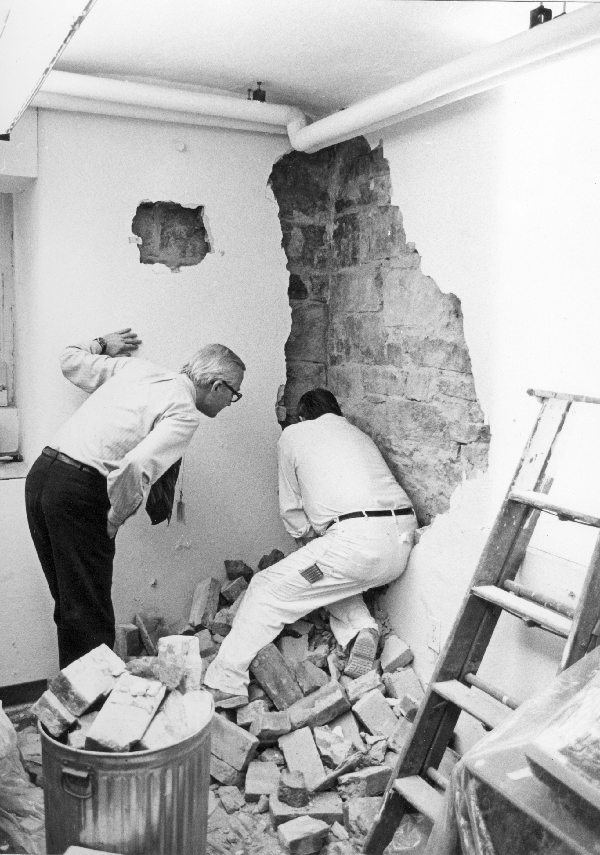
Perhaps prompted by the Washington Post article, a rather destructive search for the cornerstone was undertaken in 1975 to no avail.
The most recent attempt to locate the Castle’s elusive cornerstone was initiated in 2022 to commemorate the Smithsonian’s 175th birthday. The survey was conducted by the New York firm Atkinson-Noland & Associates Inc. on April 19, 2022, with a full report filed on April 26.
The nondestructive investigation utilized surface penetrating radar (SPR), a magnetic locator, and a fiber-optic videoscope to search for the metal box reported to have been inserted inside the cornerstone in 1847. For the history of the cornerstone and its contents click here.
Summary of the Survey
What follows is a greatly edited summary of the full report. Click here to view the full report.
Surface Penetrating Radar Methodology (SPR)
Surface penetrating radar transmits high frequency electromagnetic radio (radar) pulses into solid objects. “Void spaces, metal presence, and any distinct change in material will generate significant radar reflections due to a change in radar wave velocity at the interface”.
In the most recent search, a Proceq broadband GP8000 radar antenna and a GSSI radar unit were used to conduct the surface-penetrating radar scanning. Two radar systems were used because the GSSI system has a deeper scanning range but with limited resolution, whereas the Proceq GP8000 system has limited range but higher resolution. Using the two interchangeably allowed the approximately 46-inch thick masonry walls to be scanned through while also attaining great resolution.
About 180 SPR scans were collected from both the interior and exterior sides of the wall. All interior scans were collected in the basement while the exterior scans were collected above ground level Figs. 2,3,4.
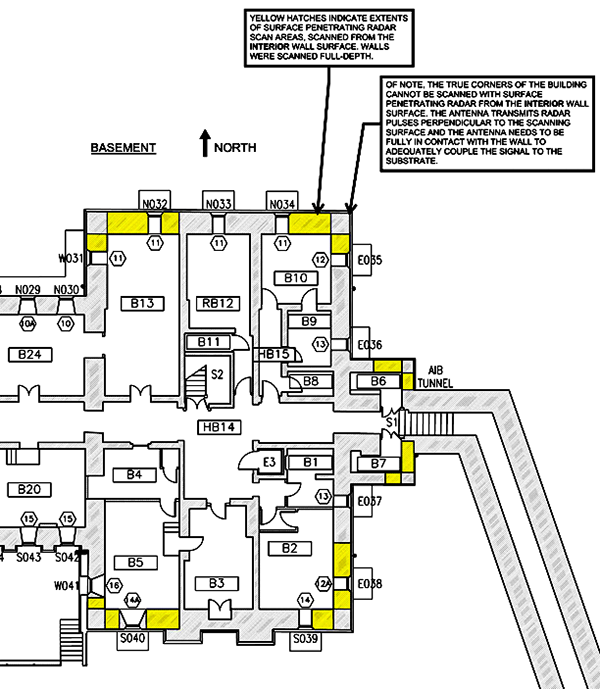
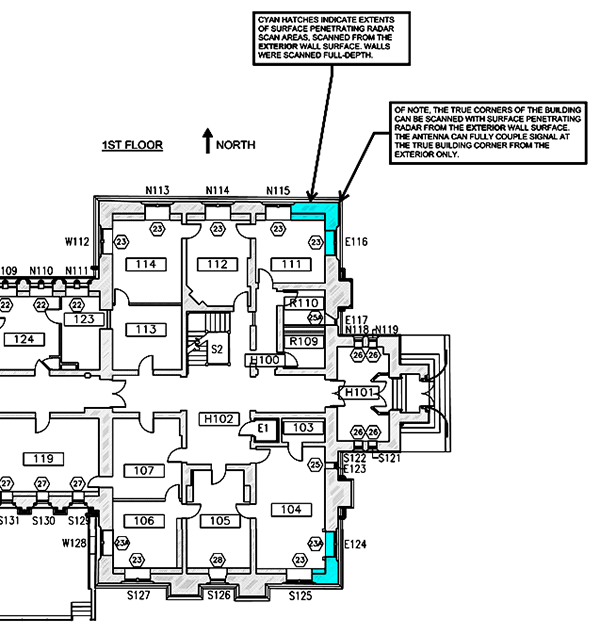
Most of the scans did not show any anomalies near or around the area in the wall where the cornerstone was likely to have been located. However, some anomalies detected during the SPR scan were further investigated with a fiber-optic videoscope.
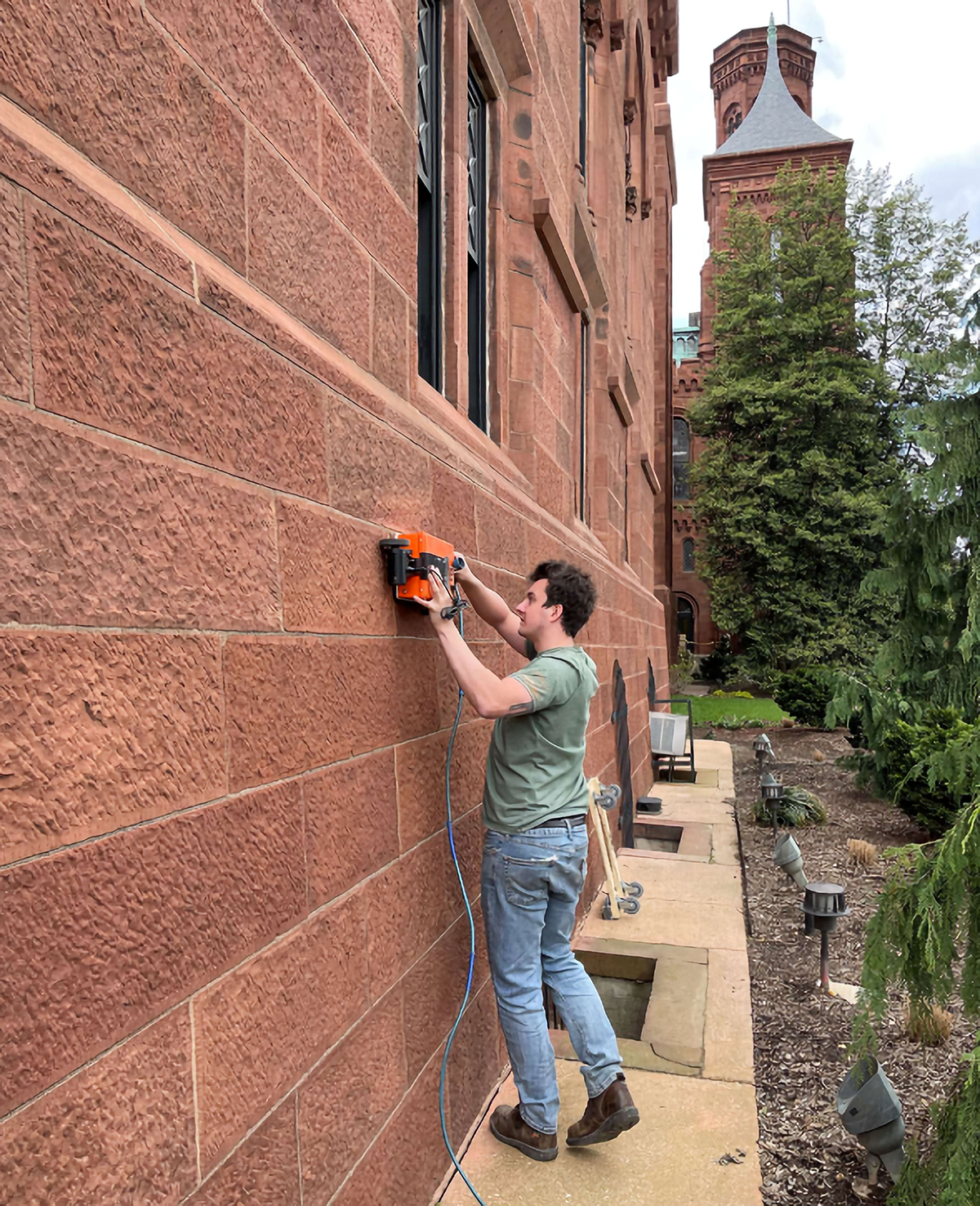
Fiber-Optic Videoscope Investigations
Four small ½-inch diameter videoscope holes were drilled through the wall where the anomalies were detected during the SPR scan. Three of the four holes were drilled from the interior directly through the wall finish, and one was drilled from the exterior at a mortar joint.
At each of the holes, a fiber-optic videoscope was inserted to view the internal conditions of the wall and search for what caused the anomalies in the SPR scans. None of the anomalies were found to be consistent with the appearance of a metal container or “time capsule”. No other anomalies were deemed significant enough to drill into the wall Figs. 5&6.
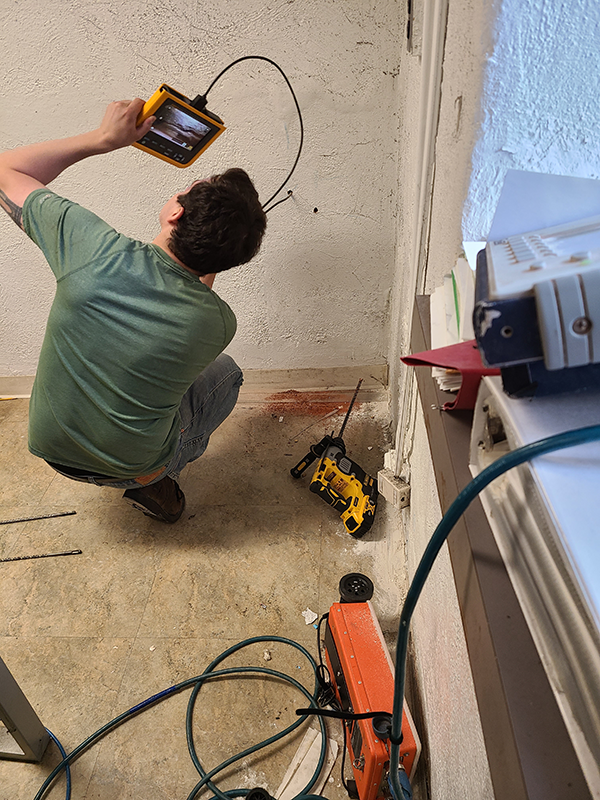
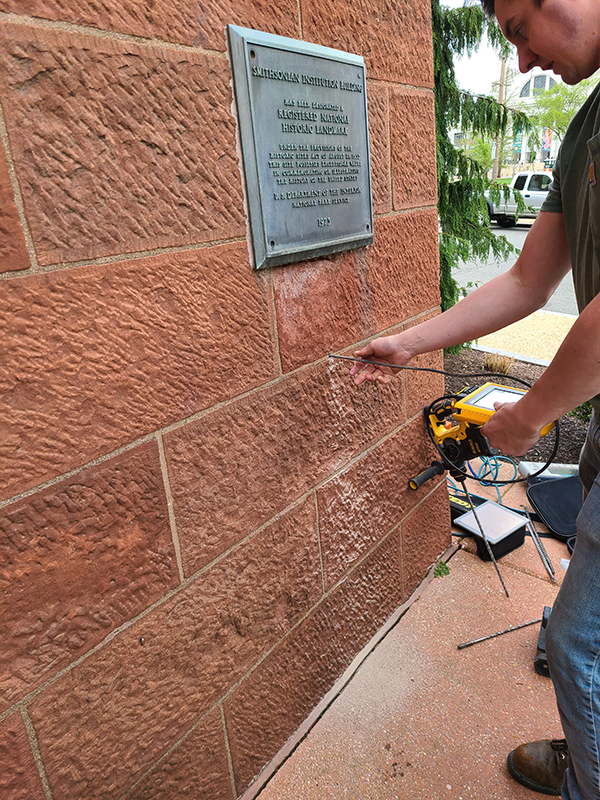
Findings Summary
None of the three methods employed during this investigation, SPR scans, radar antenna scans, or visual observation with a videoscope detected the presence of the cornerstone. Nevertheless, there is a possibility that it could be located during the current renovation of the building.
The scans were all limited to wall areas above the basement floor slab. If, however, the cornerstone was part of the foundation wall and was placed below the level of the basement slab, scanning could be achieved from the exterior after excavation. The current base isolation plan for the building would provide just such an opportunity for another attempt.